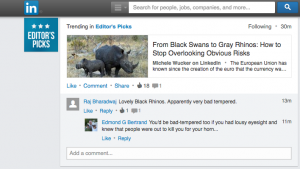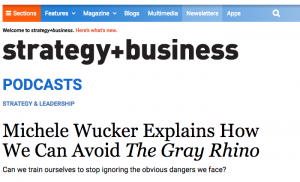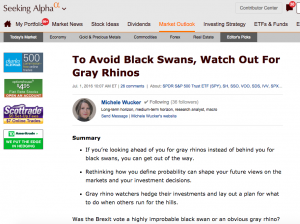Wishing you all a very Happy New Year and peaceful and prosperous 2019!
Wrapping up 2018, I’m reflecting on the books I’ve read over the past year that have made the biggest impressions. They reflect a range of interests, from ruminations on the nature of risk and uncertainty, to how we classify personalities and attitudes, to a memoir of celiac disease, to a wide-ranging list of fiction.
Risk
Before he died on New Year’s Day 2015, Ulrich Beck was as close to a cult figure as a German academic sociologist could get. In the first five years after its publication, his classic book Risk Society sold more than 60,000 copies. Yes, with four zeroes. He’s not an easy read, but amid the dense academic prose in Risk Society and the later World at Risk are flashes of brilliance.
In similar tone and style, Zygmunt Bauman’s Liquid Times: Living in an Age of Uncertainty reflects on “a society impotent, as never before, to decide its own course with any degree of certainty, and to protect the chosen itinerary once it has been selected.”
Personalities
Merve Emre tells the story of the mother-daughter team who invented the ubiquitous Myers-Briggs personality test, leading to the $500 million psychometric testing industry and the controversies that surround it, in The Personality Brokers: The Strange History of Myers-Briggs and the Birth of Personality Testing
In Rule Makers, Rule Breakers: How Tight and Loose Cultures Wire Our World, Michele Gelfand explores the cultural context of just what the title says: how wedded groups of people are to the rules they’ve set up to shape their society, and how willing they are to take risks in breaking those rules.
Celiac Disease
After she saw me put our waiter through the Celiac Inquisition as we caught up over brunch, a mutual friend of author Paul Graham recommended his memoir of learning to live with celiac disease, In Memory of Bread. His account of how he ended up in the hospital and was diagnosed is epic: an orgy of traditional bread baking (and eating) and craft beer brewing (and drinking). His baking tips are helpful. But what I really loved was how he put into words the worst part of celiac disease: the angst it causes in social meal situations. I gave it to a friend who also cannot eat wheat or other gluten products, and she loved it as much as I did before passing it on to her (also gluten-free) daughter.
Fiction
When Scott Turow spoke at a recent Authors Guild event here in Chicago, I picked up a copy of his recent international legal drama, Testimony, involving the atrocities of the collapse of the now-former Yugoslavia. I’m enjoying it as much as his earlier books, which gave me a glimpse of Chicago many years before I moved here.
Two of the year’s most celebrated novels fully deserve the praise heaped on them.
Madeline Miller’s Circe, a #1 New York Times bestseller, tells the story of the witch who turned Odysseus’ men into pigs. Since my dad has a master’s in classics and I grew up on Greek and Roman mythology, I particularly loved this fresh take on the Odyssey and related myths.
The family of “Marsh Girl” Kya, the protagonist of Delia Owens’ Where the Crawdads Sing, abandons her in their home in a swamp when she is seven years old. She raises herself, furtively interacting with the townspeople until their stories intertwine. Both a mystery and coming of age story, the book benefits from Owens’ own expertise as a naturalist.
Most of the other fiction I’ve read over the past year comes from around the world.
I cannot say enough how much I loved Turkish best-selling author Elif Safak’s The Architect’s Apprentice, the story of a boy turned elephant caregiver, architect, and man, and his interactions with royalty and ruffians in Ottoman-era Istanbul. Amazing detail, characters, and plot.
Two Chinese contemporary authors explore the nature of uncertainty through the (mis) adventures of two protagonists making their way through contemporary Beijing.
Orange Prize Finalist Xiaolu Guo’s semi-autobiographical Twenty Fragments of a Ravenous Youth is the story of a plucky would-be actress who leaves her country home for a career in Beijing.
The narrator of Xu Zechen’s Running Through Beijing has just been released from prison, and has to figure out how to make a life out of air permeated by the fine yellow dust that so often descends on Beijing. He hawks pirated DVDs and tries to make sense of old and new relationships.
After my trip to South Korea late last year (with a day trip to the DMZ), I discovered several wonderful authors. Min Jin Lee’s Pachinko, a National Book Award finalist, is an epic family saga set in the wake of the Korean War, which drives the protagonists to a complicated new life in Japan.
I picked up Han Kang’s Human Acts in Seoul on the recommendation of a Korean friend who said that it was even better than her Man Booker Prize winning novel, The Vegetarian. She tells the story of the violent student uprisings that took the lives of some of her characters, exploring people’s motivations in taking extreme risks on behalf of family members, friends, and their society.
My friend also recommended Gong Ji-Young’s Our Happy Time, perhaps an odd title for a book about a suicidal young woman and a death row inmate. But it works. The subject interested me in part because I’d heard about Korea’s high suicide rate, but what made the book work was the portrayal of the struggles of the main characters.
And from Japan, Keiko Furukura, the title character of Sayaka Murata’s Convenience Store Woman, is a singular personality, probably somewhere on the spectrum. An unlikely but welcome heroine, she breaks with social expectations and makes her own way through life in Tokyo.
I’ll be continuing my literary tour of the world in 2019 and am looking for books to add to my list. What books have moved you recently?
This article is part of my new weekly series, “Around My Mind” – a regular walk through the ideas, events, people, and places that kick my synapses into action, sparking sometimes surprising or counter-intuitive connections.
Click the blue button on the top right hand of this page to subscribe to “Around My Mind” and get notifications of new posts. Please don’t be shy about sharing, leaving comments or dropping me a private note with your own reactions.



